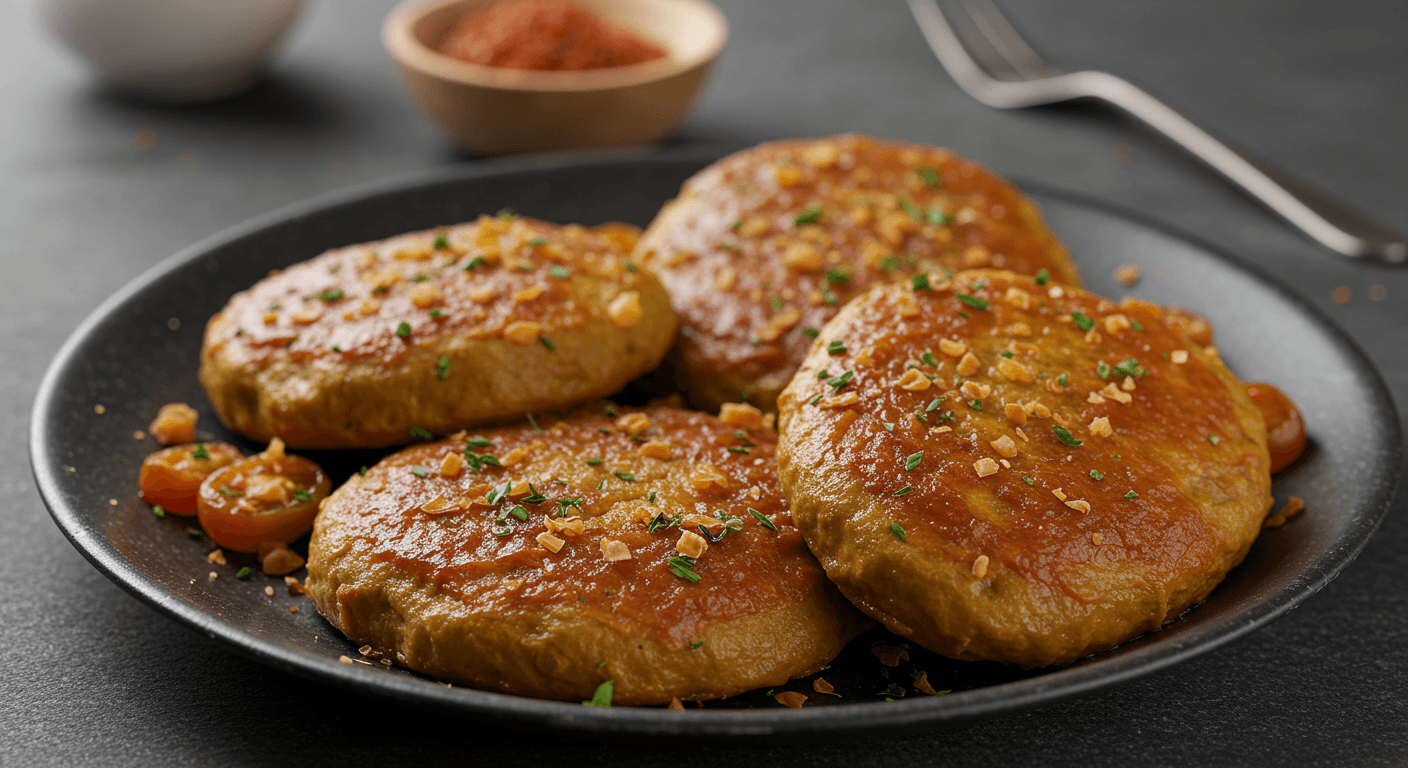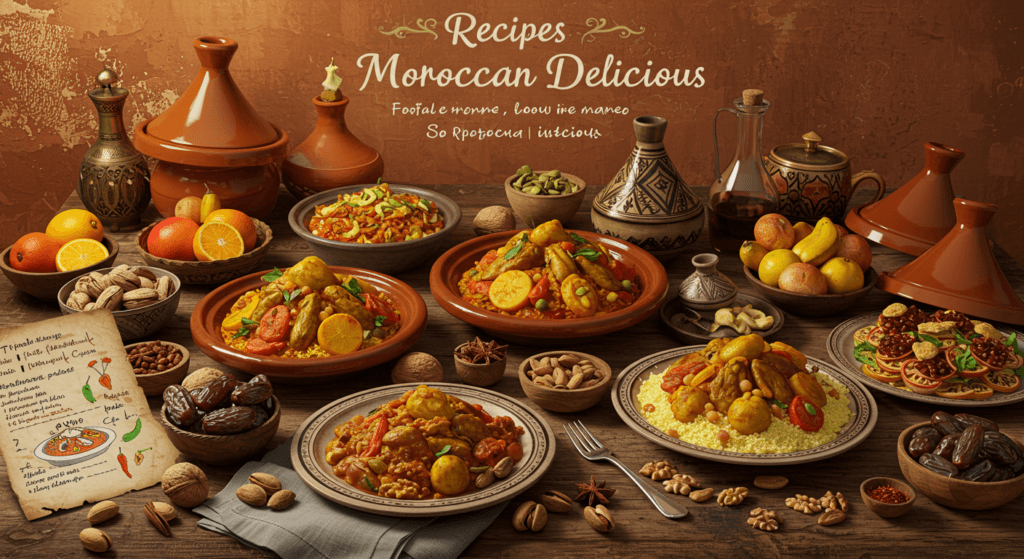
7 Surprising Recipes Moroccan Delicious with Simple Ingredients
Introduction: Can Simple Ingredients Create Restaurant-Quality Moroccan Dishes?
Have you ever wondered how those rich, aromatic Moroccan dishes at restaurants are made? Do you think they require hours of effort and hard-to-find ingredients? Think again! With just a few pantry staples and some easy techniques, you can whip up Recipes Moroccan Delicious that will transport your taste buds straight to Morocco. Whether you’re a beginner or a seasoned cook, these seven recipes are designed to be simple, flavorful, and unforgettable. Let’s dive in and uncover the secrets behind these mouthwatering dishes!
Overview: What Makes These Recipes Moroccan Delicious?
These recipes are special because they combine simplicity with bold flavors. Each dish uses everyday ingredients but delivers restaurant-quality results. Here’s what you can expect:
- Time Requirement: Most recipes take 30–45 minutes from start to finish.
- Difficulty Level: Beginner-friendly—no fancy equipment or advanced skills required.
- Why You’ll Love It: From hearty tagines to light salads, these dishes are versatile enough for weeknight dinners or weekend gatherings. Plus, they’re packed with nutrients and flavor!
Ready to get started? Let’s break it down step by step.

Essential Ingredients: The Heart of Moroccan Cuisine
The magic of Recipes Moroccan Delicious lies in their ingredients. Below are the key components you’ll need, along with substitutions if something isn’t available:
1. Spices
Spices are the backbone of Moroccan cooking. Stock up on these essentials:
- Cumin: Adds earthy warmth.
- Paprika: For a touch of sweetness and color.
- Turmeric: Brings vibrant yellow hues and anti-inflammatory benefits.
- Cinnamon: Perfect for savory-sweet dishes.
- Ras el Hanout: A spice blend that translates to “head of the shop.” Substitute with a mix of cumin, coriander, ginger, and nutmeg.
2. Proteins
Choose proteins based on your preference:
- Chicken, lamb, beef, or chickpeas (for vegetarian options).
3. Vegetables
Common veggies include carrots, zucchini, eggplant, tomatoes, and onions.
4. Grains and Legumes
Couscous, rice, lentils, and chickpeas form the base of many dishes.
5. Fresh Herbs
Parsley and cilantro add brightness.
6. Olive Oil
A staple in Moroccan kitchens, olive oil adds richness without heaviness.
Substitutions and Variations
- Swap meat for plant-based proteins like tofu or tempeh.
- Use gluten-free grains like quinoa instead of couscous.
- Adjust spice levels to suit your palate.
Step-by-Step Instructions: How to Make These Recipes Moroccan Delicious
Let’s walk through one of the standout recipes: Moroccan Chickpea Stew. This hearty dish is perfect for beginners and showcases the simplicity of Moroccan cooking.
Ingredients
- 1 tablespoon olive oil
- 1 onion, chopped
- 2 garlic cloves, minced
- 1 teaspoon ground cumin
- 1 teaspoon paprika
- ½ teaspoon turmeric
- 1 can diced tomatoes (14 oz)
- 1 can chickpeas (15 oz), drained and rinsed
- 2 cups vegetable broth
- Salt and pepper to taste
- Fresh parsley or cilantro for garnish
Instructions
- Sauté Aromatics: Heat olive oil in a large pot over medium heat. Add the onion and sauté until golden brown (about 5 minutes). Stir in garlic and cook for another minute.
- Add Spices: Sprinkle cumin, paprika, and turmeric into the pot. Stir well to coat the onions and release the fragrance of the spices (about 30 seconds).
- Build Flavor: Pour in the diced tomatoes and vegetable broth. Bring the mixture to a boil, then reduce the heat to low.
- Simmer: Add the chickpeas and let the stew simmer for 20–25 minutes, allowing the flavors to meld together. Season with salt and pepper to taste.
- Garnish and Serve: Top with fresh parsley or cilantro before serving.
Tips for Success
- Toast whole spices briefly in a dry pan before grinding them for extra depth.
- Don’t rush the simmering process—it’s crucial for developing flavor.
- Taste as you go and adjust seasonings accordingly.
Assembly: Bringing It All Together
Once your dish is ready, presentation matters! Here’s how to assemble and serve your Recipes Moroccan Delicious:
- Serve Over Couscous or Rice: Fluffy grains soak up the flavorful sauce beautifully.
- Add Texture: Top with toasted almonds or sesame seeds for crunch.
- Garnish Creatively: Use fresh herbs, lemon wedges, or pomegranate seeds for pops of color.
For example, pair the chickpea stew with warm couscous and a dollop of yogurt for creaminess.
Storage and Make-Ahead Tips
One of the best things about Recipes Moroccan Delicious is their versatility for meal prep. Follow these tips for storing leftovers:
- Refrigeration: Store in an airtight container for up to 4 days.
- Freezing: Freeze portions in freezer-safe bags for up to 3 months. Thaw overnight in the fridge before reheating.
- Reheating: Warm gently on the stovetop or microwave, adding a splash of water or broth to loosen the sauce.
Making ahead? Double the recipe and freeze half for busy nights.
Recipe Variations: Get Creative!
Feel free to experiment with these ideas:
- Veggie-Packed Tagine: Add sweet potatoes, apricots, or raisins for a sweet-and-savory twist.
- Seafood Surprise: Swap chickpeas for shrimp or cod in the stew.
- Spice It Up: Add harissa paste or red pepper flakes for heat.
- Breakfast Twist: Turn leftover stew into a frittata by mixing it with eggs and baking until set.
Conclusion: Your Moroccan Culinary Adventure Awaits!
With these Recipes Moroccan Delicious, you’ve unlocked the secret to creating authentic, flavorful meals with minimal effort. Whether you’re hosting a dinner party or simply craving something new, these dishes promise to delight. So grab your spices, roll up your sleeves, and let your kitchen become a portal to Morocco. Happy cooking!

FAQs About Recipes Moroccan Delicious
Q1: Are These Recipes Healthy?
Absolutely! Many Moroccan dishes rely on wholesome ingredients like lean proteins, vegetables, legumes, and healthy fats. Plus, the spices offer anti-inflammatory benefits.
Q2: Can I Make These Recipes Gluten-Free?
Yes! Opt for gluten-free grains like quinoa or rice instead of couscous.
Q3: How Long Do Leftovers Last?
Most dishes stay fresh in the fridge for 3–4 days. Always reheat thoroughly before eating.
Q4: Can I Use Fresh Tomatoes Instead of Canned?
Of course! Use 2–3 fresh tomatoes, chopped, as a substitute.
Q5: Where Can I Find Ras el Hanout?
Look for it at specialty stores or online. Alternatively, make your own blend using cumin, coriander, ginger, and nutmeg.
There you have it—everything you need to master Recipes Moroccan Delicious. Now it’s your turn to shine in the kitchen!


